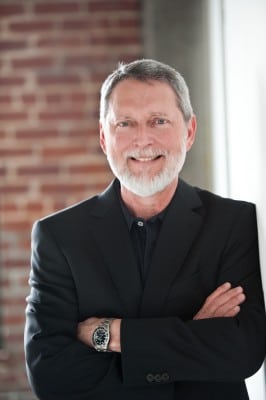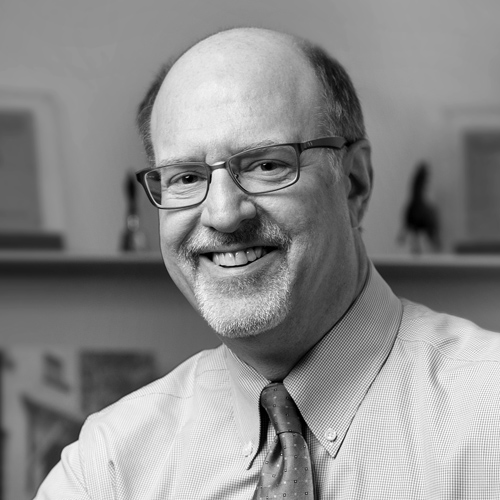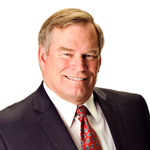
Not long after MicroPort Scientific acquired Wright Medical’s OrthoRecon business unit, the new parent company’s chairman, Dr. Zhaohua Chang, addressed his new employees. They listened as he explained the ways in which his company would measure the orthopedic group’s success. One of those ways, he said, was through the happiness and satisfaction of each employee. “That was something employees were excited to hear,” says Ed Steiger, senior vice president of human resources for MicroPort Orthopedics, which debuted in January 2014. Chang closed his speech with a simple statement that caused heads to swivel in surprise. “Thank you,” he said, “and I love you all.”
It was a fresh start for the orthopedic reconstruction business at MicroPort, Steiger says. Five years ago, Wright Medical made a strategic decision to focus more on its biologics, foot, ankle, and extremity products rather than its hip and knee business. The extremities market grows 15–18 percent per year, Steiger explains, while the orthopedic reconstruction business remains flat at only 3 percent growth. Wright Medical understandably directed fewer resources, capital, and people for the slower growing OrthoRecon business unit.
About 18 months ago, Wright was searching for a distributor in China when they first made contact with MicroPort Scientific. The global medical-device company is based in Shanghai, China, and is connected to more than 2,200 hospitals in that country. MicroPort Scientific quickly took an interest in the American group. The two companies announced MicroPort’s acquisition of the OrthoRecon group in June 2013.
“MicroPort Scientific took a risk,” Steiger says. “They are a $150 million company that bought our $240 million company.” After the sale was announced, changes quickly followed. The newly created MicroPort Orthopedics, a global enterprise, would stay headquartered in Tennessee and retain the same management team, with former Wright OrthoRecon president Ted Davis taking on the role of chief executive officer. MicroPort Scientific decided to assign the Tennessee management team to play a key role in running all of MicroPort Scientific’s businesses outside of China.
The new parent company also allowed MicroPort Orthopedics to invest an additional $10 million in development and an extra $5 million in marketing and medical education.“Our people feel really good,” Steiger says. “MicroPort Scientific is investing in our business. Our turnover rate is the lowest it has been in years. In fact, we’ve had to hire people because of the expansion of our efforts and in anticipation of larger sales in China.”
Steiger’s first responsibility, following the announcement of the acquisition, was to set up new human resources programs, policies, and practices, as well as to create new benefits programs in each country. He also helped his new parent company understand why these programs would keep MicroPort competitive.
Less than a year after MicroPort Orthopedics’ launch, Steiger is a member of a team comprised of Davis and several other leaders helping to drive change in MicroPort’s culture. One step to build this change was to create a culture team. Ralph Beentjes, senior manager of sales operations, heads up a group that meets regularly to discuss how to make MicroPort a better place to work. The group is comprised of 10 employees from various countries, levels, and roles within the organization—not, Steiger emphasizes, a group of senior executives. “Executive leadership doesn’t know all of the answers,” Steiger says. “We want an entrepreneurial culture that comes from all levels.”
The culture team is another indicator of changes to MicroPort Orthopedics’ structure since the acquisition. There is an emphasis on back-and-forth communications that will hopefully provide a more transparent and trustworthy atmosphere. To continue making the new company a place in which people want to build their careers, MicroPort Orthopedics is working with the Center for Creative Leadership to identify areas in which they can still improve and receive recognition for the changes they’ve already made. “We can talk about culture and what we want to be all day long,” Steiger says, “but if we don’t involve the employees and make them feel as though they own this, that they’re part of this, and that they can impact the culture, we just don’t feel we’re going to get where we need to be.”
There are still a number of areas in which Steiger wants to focus. The first is to continue to develop open lines of communication with employees and expand their knowledge of the orthopedic products that benefit so many patients. “In the prior company, we had a lot of people who’d never held a hip or a knee [replacement]; they didn’t understand how important their work is,” Steiger says. He also wants to add sports clubs, community involvement activities, and opportunities for company leaders to be visible to the staff.
Steiger is one of the more experienced members of the management team that is crafting changes in the company’s structure and atmosphere, but he doesn’t take credit for these advancements. He says Davis and the culture team deserves most of the recognition. “Davis is the driver; he knows, long term, what’s going to make a difference,” Steiger explains. “All of our competitors have smart people. Most of our competitors have much larger budgets. What’s going to make a difference for us is how well we work together.”

